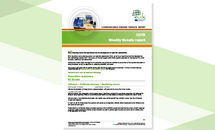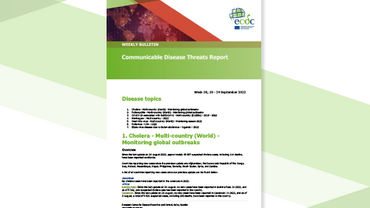Communicable disease threats report, 6-12 March 2016, week 10
The ECDC Communicable Disease Threats Report (CDTR) is a weekly bulletin for epidemiologists and health professionals on active public health threats. This issue covers the period 6-12 March 2016 and includes updates on Zika virus, haemolytic uraemic syndrome in Romania and seasonal influenza.
Executive summary
This issue covers the period 6 to 12 March 2016 and includes updates on seasonal influenza, Haemolytic uraemic syndrome (HUS) in Romania and Zika.
Seasonal influenza - Europe
Of 44 countries that reported on qualitative influenza indicators in the WHO European Region, 25 reported widespread influenza activity and 28 reported medium intensity of influenza activity. Influenza B virus constituted 55% of influenza virus detections in sentinel samples compared with 47% for the previous week, indicating a gradual shift towards influenza B over the last few weeks.
The number of cases of severe disease was fewer compared to previous weeks, but most cases continued to be associated with A(H1N1)pdm09 virus infection and were in people aged 15–64 years.
Haemolytic uraemic syndrome (HUS) cases in young children – Romania
Since January 2016, the Ministry of Health in Romania has reported that 15 children aged 5 to 38 months have been hospitalised in Bucharest and Iasi with haemolytic uraemic syndrome (HUS). In addition, two cases without HUS tested positive for VTEC O26. This is an outbreak of VTEC O26 confirmed through serology. The epidemiological investigation suggests a single source.
Following initial environmental investigations, E. coli O26 was identified in soft cheese samples produced by a local company that sells traditional dairy items in Arges district. The factory has been closed and the product is no longer available on the market.
Zika virus infection – multistate
During the last week, the Philippines and Fiji confirmed the first autochthonous cases of Zika virus transmission in 2016. As of 4 March 2016, 41 countries and territories have reported autochthonous cases of Zika virus infection in the past nine months. Links between Zika virus infection in pregnancy and microcephaly of the foetus have been under investigation since October 2015.
Thirty EU/EEA countries have issued travel advice for people travelling to Zika-affected areas. Of these, 28 have advised pregnant women to consider postponing travel to countries affected by the Zika epidemic.
Download






